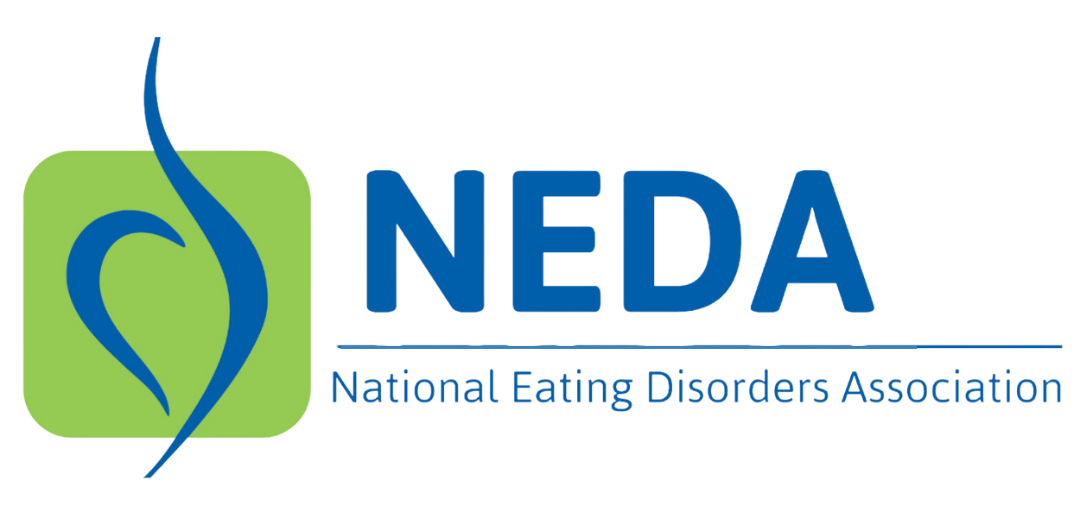Other Specified Feeding or Eating Disorders (OSFED)
Reviewed by Amy Baker Dennis, PhD, FAED
What is Other Specified Feeding or Eating Disorders (OSFED)?
Other Specified Feeding or Eating Disorders (OSFED) was previously known as Eating Disorder Not Otherwise Specified (EDNOS) in past editions of the Diagnostic and Statistical Manual. Despite being considered a ‘catch-all’ classification that was sometimes denied insurance coverage for treatment as it was seen as less serious, OSFED is a serious, life-threatening, but treatable eating disorder. The category was developed to encompass those individuals who did not meet strict diagnostic criteria for anorexia nervosa, bulimia nervosa, or binge eating disorder but still had a significant eating disorder. In community clinics, the majority of individuals were historically diagnosed with EDNOS and more recent research has found that OSFED is the most common eating disorder with approximately 3.8% of women and 1.6% of men being diagnosed with the disorder at some point in their lives.1
Research into the severity of OSFED shows that the disorder is just as severe as other eating disorders based on the following:
- Adolescents with OSFED were just as likely to be hospitalized as adolescents diagnosed with anorexia nervosa.2
- Individuals diagnosed with OSFED exhibit similar eating disorder symptom severity and cognitive, genetic and environmental risk factors to anorexia nervosa, bulimia nervosa and binge eating disorders.3,4
- People with EDNOS/OSFED were just as likely to die as a result of their eating disorder as people with anorexia nervosa, bulimia nervosa, or binge eating disorder. Furthermore, one study found that approximately 33% of the deaths attributed to eating disorders were associated with OSFED, higher than any other type of eating disorder.1
How is OSFED Diagnosed?
In the DSM-5 TR, a person must present with feeding or eating behaviors that cause clinically significant distress and impairment, but do not meet the full criteria for any of the other disorders.5
A diagnosis might then be assigned that addresses the specific reason why the presentation does not meet the specifics of another disorder (e.g., bulimia nervosa – low frequency). The following are further examples for OSFED:5
- Atypical Anorexia Nervosa: All criteria are met for anorexia nervosa, except despite significant weight loss, the individual’s weight is within or above the “average” range. A growing body of research has found that compared to anorexia nervosa people with atypical anorexia experience similar symptoms of medical instability and that rapid weight loss at any body size can lead to serious life threatening medical complications often associated with malnutrition. Due to the severity of these health consequences it’s important that if you or a loved one is showing signs of atypical anorexia they seek treatment as soon as possible.2
- Binge Eating Disorder (of low frequency and/or limited duration): All of the criteria for BED are met, except at a lower frequency and/or for less than three months.
- Bulimia Nervosa (of low frequency and/or limited duration): All of the criteria for bulimia nervosa are met, except that the binge eating and inappropriate compensatory behavior occurs at a lower frequency and/or for less than three months.
- Purging Disorder: Recurrent purging behavior to influence weight or shape in the absence of binge eating.
- Night Eating Syndrome: Recurrent episodes of night eating. Eating after awakening from sleep, or by excessive food consumption after the evening meal. The behavior is not better explained by environmental influences or social norms. The behavior causes significant distress/impairment. The behavior is not better explained by another mental health disorder (e.g. BED).
What are the Signs and Symptoms of OSFED?
Please note that even though these are common symptoms not everyone with OSFED displays all of these emotional and behavioral symptoms.
Emotional and Behavioral Signs and Symptoms:5
- Preoccupied with weight, shape and appearance leading to restriction/dieting behaviors to promote weight loss
- Dramatic weight loss
- Dresses in layers to hide weight loss and/or stay warm
- Is preoccupied with weight, food, calories, fat grams, and dieting
- Refuses to eat certain foods, and often eliminates whole food groups (carbohydrates, fats, etc.)
- Makes frequent comments about feeling “fat” or being a higher weight despite weight loss
- Complains of constipation, abdominal pain, cold intolerance, lethargy, and/or excess energy
- Denies feeling hungry
- Engages in episodes of binge eating large amounts of food in a short period of time, often in secret
- Evidence of purging behaviors, including frequent trips to the bathroom after meals, signs and/or smells of vomiting, presence of wrappers or packages of laxatives or diuretics
- Appears uncomfortable eating around others
- Develops food rituals (e.g. eats only a particular food or food group [e.g. condiments], excessive chewing, doesn’t allow foods to touch)
- Skips meals or takes small portions of food at regular meals
- Engaging in fad diets, the elimination of whole food groups, vegetarianism/veganism in service of weight loss.
- Fear of eating in public or with others
- Steals or hoards food in strange places
- Drinks excessive amounts of water or non-caloric beverages
- Uses excessive amounts of mouthwash, mints, and gum
- Hides body with baggy clothes
- Maintains excessive, rigid exercise regimen – despite weather, fatigue, illness, or injury—due to the need to “burn off ” calories
- Creates lifestyle schedules or rituals to make time for binge-and-purge sessions
- Withdraws from usual friends and activities
- Looks bloated from fluid retention
- Frequent checking in the mirror for perceived flaws in appearance
- After episodes of binge eating, frequently engages in compensatory behaviors such as self-induced vomiting, diuretic/laxative use, fasting/restricting, excessive exercise or manipulation of insulin dosage
- Extreme mood swings
Physical Signs and Symptoms:5
- Noticeable fluctuations in weight, both up and down
- Body weight is typically within the “normal” weight range; may be overweight
- Stomach cramps, other non-specific gastrointestinal complaints (constipation, acid reflux, etc.)
- Menstrual irregularities, primary or secondary amenorrhea (not starting the menstrual cycle or the loss of the menstrual cycle) or only experiencing a period when taking hormonal supplements
- Difficulties concentrating
- Abnormal laboratory findings (anemia, low thyroid and hormone levels, low potassium, low blood cell counts, slow heart rate)
- Dizziness
- Fainting/syncope
- Feeling cold all the time
- Sleep problems
- Cuts and calluses across the top of finger joints (a result of inducing vomiting)
- Dental problems due to purging include erosion of enamel; bleeding gums/periodontal disease; temperature sensitivity; cavities; discoloration of teeth; dry mouth; enlarged parotid/submandibular glands and swallowing problems
- Dry skin
- Dry and brittle nails
- Swelling around area of salivary glands
- Fine hair on body
- Thinning of hair on head, dry and brittle hair (lanugo)
- Cavities, or discoloration of teeth, from vomiting
- Muscle weakness
- Yellow skin (in context of eating large amounts of carrots)
- Cold, mottled hands and feet or swelling of feet
- Poor wound healing
What Conditions Commonly Co-Occur?
- Anxiety disorders including generalized anxiety disorder, social anxiety, phobias, panic disorder, and post-traumatic stress disorder6
- Depression and other mood disorders4
- Impulse control disorders (risky sexual behaviors, driving while intoxicated, shoplifting, etc)7
- Substance use disorders6
- Self-injurious behaviors (cutting and other forms of self-harm without suicidal intent)6
What are the Health Consequences of OSFED?
The health consequences of eating disorders in the OSFED category can be just as severe as disorders that meet the full criteria for anorexia nervosa, bulimia nervosa, and binge eating disorder. The universal symptoms in all eating disorders are the manipulation of food intake (dieting, restricting, purging, excessive exercising, etc.) to improve body image, self-esteem, or a negative mood state. Symptoms must interfere with social, interpersonal, occupational, or physical functioning.2,3
Learn more about health consequences.
How is OSFED Treated?
Treating other specified feeding or eating disorders (OSFED) requires working with a multidisciplinary team of health and mental health professionals who have expertise in treating eating disorders. This treatment team may include a physician, psychiatrist, psychotherapist, and dietician. 9 Given the serious physical and psychological consequences that can result from eating disorders it is essential to seek professional help as soon as possible. Early intervention has also been shown to be an important factor in improving treatment outcomes.6
Learn more about treatment here.
Learn more about finding treatment providers in your area here.
Sources
[1] Deloitte Access Economics. (2020). The Social and Economic Cost of Eating Disorders in the United States of America: A Report for the Strategic Training Initiative for the Prevention of Eating Disorders and the Academy for Eating Disorders. Available at:
https://www.hsph.harvard.edu/striped/report-economic-costs-of-eating-disorders/
[2]Brennan, C., Illingworth, S., Cini, E., & Bhakta, D. (2023). Medical instability in typical and atypical adolescent anorexia nervosa: a systematic review and meta-analysis. Journal of eating disorders, 11(1), 58. https://doi.org/10.1186/s40337-023-00779-y
[3] Withnell, S. J., Kinnear, A., Masson, P., & Bodell, L. P. (2022). How Different Are Threshold and Other Specified Feeding and Eating Disorders? Comparing Severity and Treatment Outcome. Frontiers in psychology, 13, 784512. https://doi.org/10.3389/fpsyg.2022.784512
[4] Riesco, N., Agüera, Z., Granero, R., Jiménez-Murcia, S., Menchón, J. M., & Fernández-Aranda, F. (2018). Other Specified Feeding or Eating Disorders (OSFED): Clinical heterogeneity and cognitive-behavioral therapy outcome. European psychiatry : the journal of the Association of European Psychiatrists, 54, 109–116. https://doi.org/10.1016/j.eurpsy.2018.08.001
[5]American Psychiatric Association. (2022). Diagnostic and statistical manual of mental disorders: DSM-5-TR. American Psychiatric Association Publishing. https://doi.org/10.1176/appi.books.9780890425787
[6] Hambleton, A., Pepin, G., Le, A., Maloney, D., National Eating Disorder Research Consortium, Touyz, S., & Maguire, S. (2022). Psychiatric and medical comorbidities of eating disorders: findings from a rapid review of the literature. Journal of eating disorders, 10(1), 132. https://doi.org/10.1186/s40337-022-00654-2
[7] Miranda-Olivos, R., Agüera, Z., Granero, R., Vergeer, R. R., Dieguez, C., Jiménez-Murcia, S., Gearhardt, A. N., & Fernández-Aranda, F. (2022). Food addiction and lifetime alcohol and illicit drugs use in specific eating disorders. Journal of behavioral addictions, 11(1), 102–115. https://doi.org/10.1556/2006.2021.00087
[8]Fouladi, F., Mitchell, J. E., Crosby, R. D., Engel, S. G., Crow, S., Hill, L., Le Grange, D., Powers, P., & Steffen, K. J. (2015). Prevalence of Alcohol and Other Substance Use in Patients with Eating Disorders. European eating disorders review : the journal of the Eating Disorders Association, 23(6), 531–536. https://doi.org/10.1002/erv.2410
[9] Crone, C., Anzia, D. J., Fochtmann, L. J., & Dahl, D. (2023). The American Psychiatric Association practice guideline for the treatment of patients with eating disorders, Fourth Edition. American Psychiatric Association. Available at: https://psychiatryonline.org/doi/book/10.1176/appi.books.9780890424865

